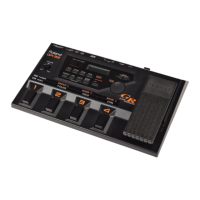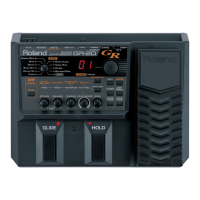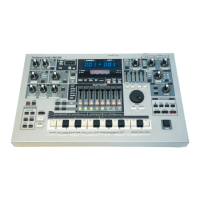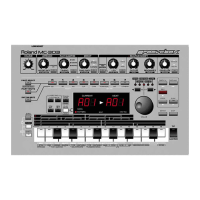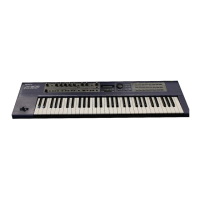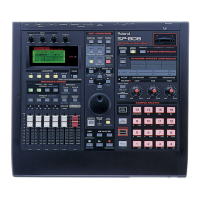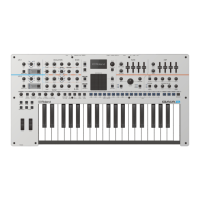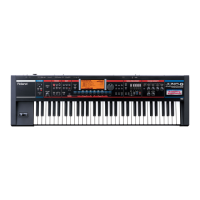The GR-30 is equipped with an Arpeggiator function
that is uniquely suited to guitar performances. When
on, the Arpeggiator function takes over when a chord
is strummed, performing complex picking (notes and
rhythm).
Arpeggiator can be used to perform simple backing
with synthesizer sounds as you play the melody, and
can also be used to get a wide variety of effects that
have never before been possible with a guitar synthe-
sizer.
Chapter 8: The Arpeggiator Function
51
8
About Arpeggiator
“Arpeggio Patterns”
Let’s consider the simplest way to play an arpeggio
on an actual acoustic guitar.
The left hand is used to finger the song’s chord pro-
gression. Meanwhile, the right hand is used to play
with in rhythm that follows an unvarying pattern,
such as string numbers 5, 4, 3, 4, 1, 3, 2, 3.
<<fig. 8-1>>
On the GR-30, this sequence of played strings (“5, 4, 3,
4...”) is called an “arpeggio pattern,” or sometimes
simply “pattern.”
Every patch on the GR-30 can be given its own pat-
tern. When Arpeggiator is on, fingering a chord (or
single note) and playing one stroke causes
Arpeggiator to refer to the pattern settings related to
how notes are played (A-RHYTHM, A-TEMPO, and
so on, which are described later), and an arpeggio is
played using synth sounds.
As the figure below shows, an arpeggio pattern is an
array of data arranged on grids.
The data on the grids are of three types: “play with
XXX force,” “tie (hold the previous note),” and “no
sound.” The horizontal length can be varied for each
pattern (maximum 32).
<<fig. 8-2>>
✽
If you play a string that is not covered by this data (such
as string 6 in the example above), or if you play different
number of strings from the ones covered by the data,
internal rules established to ensure the most natural
changes such as the chord’s lowest tone (root) are used
play a substitute string and generate an arpeggio.

